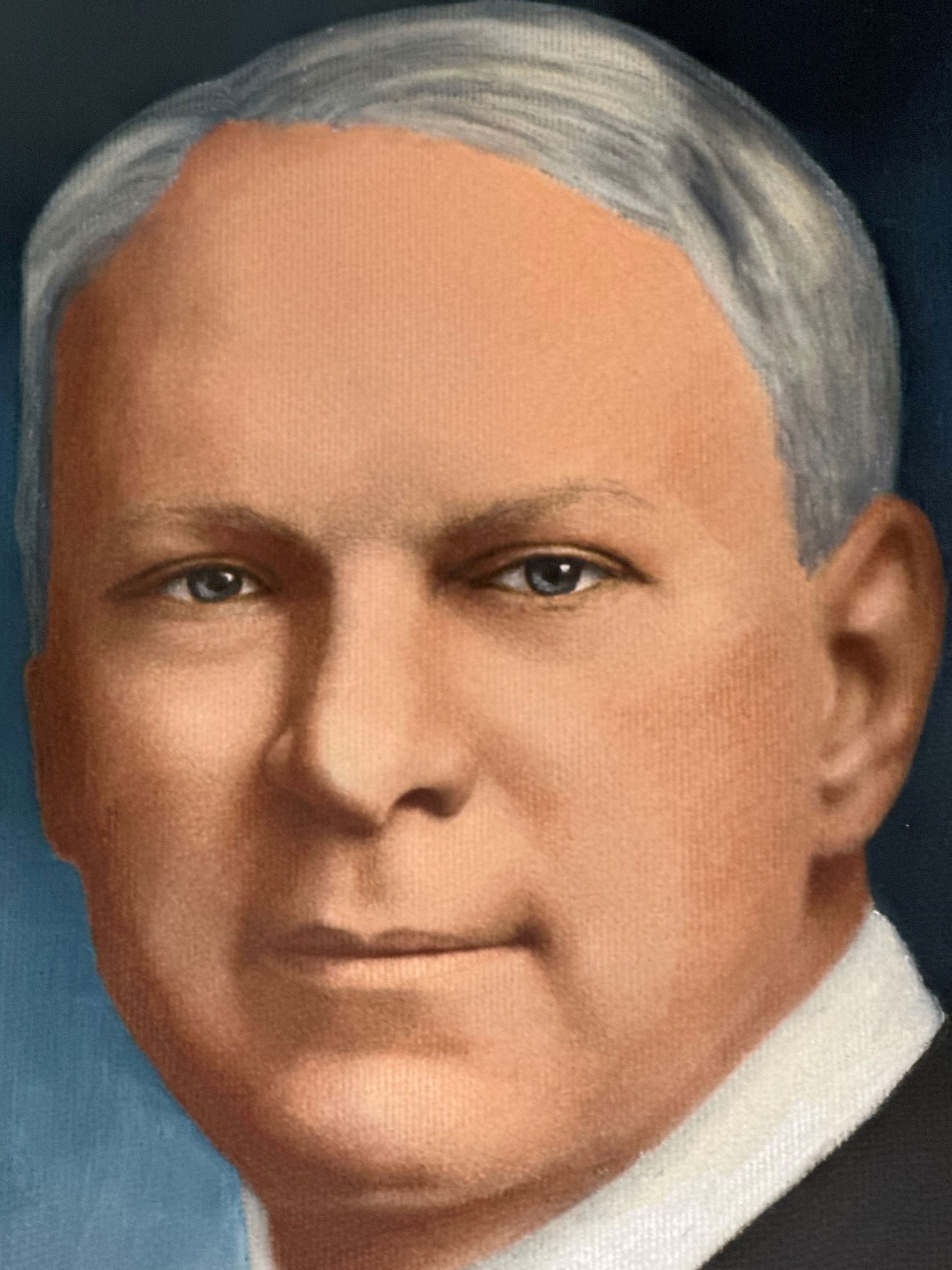
Charles O. Austin
A Legacy of Leadership, Service, and Integrity
Charles O. Austin was born in Palmyra, Missouri, and later moved to Fulton, where he completed his college education at Westminster College. His long and distinguished career in banking began humbly in 1890, when at the age of 19 he accepted a position as a bank clerk at the Marion Savings Bank in Palmyra, earning just $25 a month.
A Distinguished Banking Career
Mr. Austin quickly rose through the ranks of the banking industry. In 1893, he became Assistant Cashier of the bank, and by 1895, he had been appointed State Bank Examiner of Missouri. His success continued, and in 1897, he was elected Cashier of the Merchant’s National Bank in St. Louis.
At just 30 years old, in 1901, Mr. Austin was elected Vice President of the American Bankers Association, and by 1902, he achieved national prominence as Vice President of the National Bank of North America in Chicago. He also served as Director of the Jackson Trust and Savings Bank, Vice President of the Illinois Bankers Association, and later became President of the Missouri Bankers Association.
In 1904, he was appointed Treasurer of the American Bankers Association. That same year, his photograph appeared in The Chicago Banker among ten individuals listed as “Prominent Bankers of the United States,” alongside future Vice President Charles G. Dawes.
Service to Texas
After years of intense professional work, Mr. Austin’s health declined, leading him to spend a year on a ranch in New Mexico. He then settled in San Antonio, Texas, in 1906, where he entered the real estate and mortgage business. His leadership quickly stood out — he became President of the Real Estate Exchange in 1913, President of the Bexar County Highway League in 1914, and served two years as a Vice President of the San Antonio Chamber of Commerce.
In 1915, John S. Patterson, State Commissioner of Insurance and Banking, appointed him State Bank Examiner for the Fort Worth District. The following year, he was promoted to Deputy Bank Commissioner, and later that same year, after Patterson’s passing, Mr. Austin succeeded him as State Banking Commissioner.
Mr. Austin served as Texas Banking Commissioner during two separate terms — first under Governor James E. Ferguson, and again under Governor Miriam A. Ferguson. He was widely regarded as one of the foremost banking authorities in Texas, known for his integrity and his efforts to restore confidence in the state’s financial institutions.
Although he once considered a gubernatorial campaign in 1928, he ultimately chose not to run, focusing instead on community and civic service.
A Leader in Cleveland
In 1926, Mr. Austin and his first wife, Evadne H. Austin, moved to Cleveland, Texas, after purchasing controlling interest in the Farmers’ State Bank. He served as Chairman of the Board until January 1, 1943, when he took office as Liberty County Judge.
He was elected County Judge in 1942 and nominated for re-election in 1944. During his years in Cleveland, Mr. Austin played a leading role in the incorporation of the City of Cleveland in 1935 and served multiple terms as a City Councilman.
A generous civic leader, Mr. Austin donated land for community use, including several acres to the local American Legion Post, approximately 15 acres to the City of Cleveland for utility sites, and other parcels supporting public projects. He remained a director of the Cleburne National Bank until his passing.
Family and Personal Life
Mr. Austin’s first wife, Evadne H. Austin, passed away in 1936 and is buried in Row 87, Lot 1 of the Cleveland Memorial Cemetery.
Some years later, while attending a press and banker convention in San Antonio, Mr. Austin met Bessie Sims, a nurse who cared for him during a period of poor health. The two developed a close relationship, and on December 2, 1939, they were married. After their wedding, they made their home in Cleveland.
When Mrs. Austin traveled to San Antonio to care for her ailing mother, the couple wrote daily letters to each other. These heartfelt letters — filled with Mr. Austin’s reflections on life in Cleveland and his affection for Bessie — are now preserved in the Austin Memorial Library’s special collections, along with White House Ball invitations and handwritten letters from U.S. Presidents expressing appreciation for Mr. Austin’s public service.
A Lasting Legacy
Mr. Austin passed away in 1944 and is buried beside his first wife in Row 87, Lot 3 of the Cleveland Memorial Cemetery.
His contributions to banking, government, and civic life were extensive. The Austin Memorial Library holds a collection of newspaper clippings and personal writings documenting his efforts to reform the Texas banking industry during a time of widespread corruption. His published articles on banking practices continue to be cited as examples of sound financial principles still respected in the industry today.
Through his life of service and generosity, Charles O. Austin helped lay the foundation for both the financial integrity of Texas and the enduring cultural and educational legacy that continues at the Austin Memorial Library.
